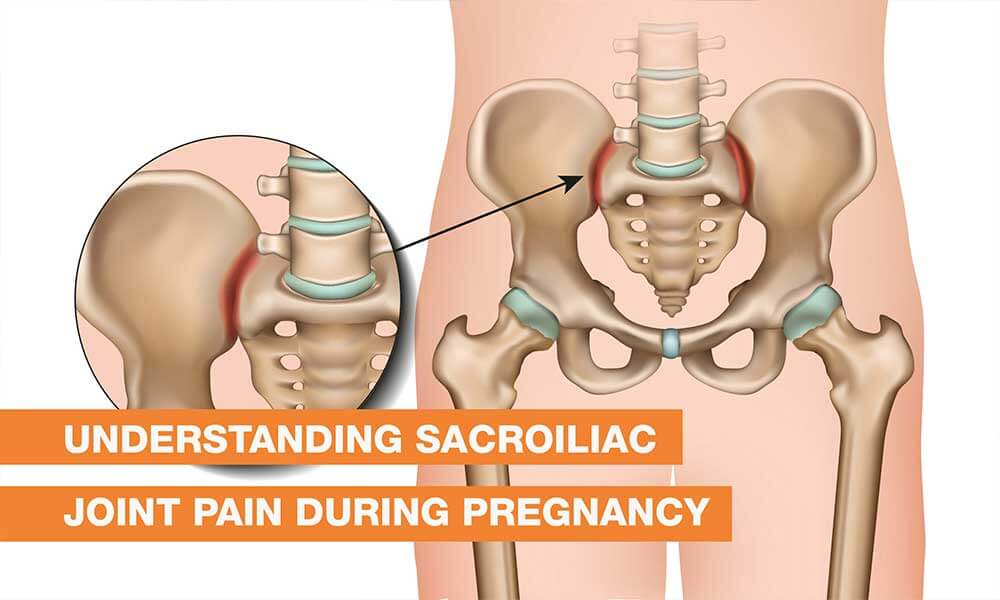Request Appointment
Enter your details and we will be in touch with you shortly;
Or call
8655885566
between 8 am and 8 pm.


Pregnancy hormones, mainly relaxin, prepare your body for childbirth by loosening and softening the ligaments that connect your pelvic bones. While necessary for labor, this can be uncomfortable. Here are some common causes of sacroiliac during pregnancy:
Also remember that women are 8 to 10 times more likely to get SI dysfunction than men because of body chemistry and structure differences.

Sacroiliac in pregnancy occurs when there is either too much or too little movement within the SI joint, which leads to inflammation and sacroiliitis. The pain from the sacroiliac dysfunction during pregnancy at times can get very sharp during pregnancy, as it often worsens during prolonged sitting, standing, or even walking. Symptoms of sacroiliac dysfunction during pregnancy include:

Managing sacroiliac pain in pregnancy involves a combination of self-care measures, physical therapy, and, in some cases, medical interventions. Here are some common treatment options for sacroiliac and pregnancy:
While it may not be possible to completely avoid SI joint problems during pregnancy, some measures can help lessen the chances of developing or reducing the severity of sacroiliac in pregnancy:

Pregnancy sacroiliac joint pain is fairly common and can be very painful; however, it is effectively treatable with the right approach. If you are suffering from SI joint issues during pregnancy or other signs of pelvic girdle dysfunction during pregnancy, consult your health professional. Doctors at the QI Spine specialize in pregnancy-related sacroiliac dysfunction. Once properly cared for and managed, one can enjoy a healthy pregnancy and get ready to welcome the little one.
Visit our nearest clinic for your first consultation
Sacroiliitis progresses through four stages: the inflammation of the sacroiliac joint, erosion of the joint, coalescing or fusion of the joints, and finally, ankylosis, in which the joint becomes immobile. The diagnosis and treatment must be done at an early stage so that the symptoms can be relieved and the possible advancement of the disease might be retarded.
It tends to start between the ages of 20 to 40 years. It can occur at any age, however, especially in those conditions with underlying diseases such as ankylosing spondylitis or following trauma to the sacroiliac joint.
Yes, an MRI can visualize sacroiliitis. It provides an elaborative image of sacroiliac joints that helps identify inflammation, structural abnormality, or other signs of sacroiliitis, which can be useful for assessing diagnosis and treatment planning.
Blood tests for sacroiliitis typically include the erythrocyte sedimentation rate (ESR) and C-reactive protein (CRP) tests to detect inflammation, along with the HLA-B27 test, which can indicate a genetic predisposition to inflammatory conditions like sacroiliitis.